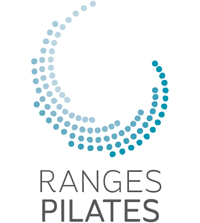Pilates can save your body from gardening
Spring has been delayed this year, but it sure is making up for it now. With all the rain and now warm weather every weed seems to be on steroids. As we clean-up for the coming summer, it’s really important to also look after your body when you garden. One of great things I like about Pilates is that you can use the techniques in everyday life, and it is also incredibly useful when doing more physical tasks such as gardening. Here are my 5 tips
1. Break up your task into smaller chunks. 4 hours weeding in one go is going to make your body achy and sore. That length of time doing any one activity is going to be hard on the body, so try to only do 20 minutes of lets say weeding, then 20 minutes mowing, 20 minutes cutting up branches, then 10 minutes picking up branches. Take regular breaks, stretching out your back and legs.
2. Regularly alternate your position and be aware of your posture. If weeding and kneeling (don’t forget those knee pads or kneeling mats, be kind to cartilage!), try swapping the hand you use, swap the leg that goes forward first. If picking up sticks and branches, change the leg that goes forward first. 100 lunges on the one leg is going to hurt.
3. Use your core! Make sure you use those deep abdominals and your pelvic floor when lifting. Not just the heavy items such as removing a heavy grass catcher, try to be conscious even when doing the lighter tasks. Think of how you use your core in the Pilates Studio and use those same techniques. If lifting something heavy, remember to breathe out on the exertion, it makes it easier to recruit those deep stabilising muscles.
4. Use your legs and glutes, AKA Butt muscles. Along with using you core when lifting, make sure the glutes are also supporting your pelvis. The glutes are vitally important. The core helps to support the spine and stabilise your torso, but the pelvis supports the spine and glutes support the pelvis. They also make it easier to walk up hills. So if carrying branches for burning up a slope, use the glutes. If lifting somethings keep a neutral spine, use the legs and the glutes to lift.
5. Stretch afterwards. This one is really important and so easy to forget. Spend at least 15-20 minutes stretching the legs, buttocks, back, shoulders, arms and chest. Think of stretches you do in the Pilates Studio at Ranges Pilates and do those; thigh stretches, hamstring, calves, buttocks, chest. Use the massage ball or foam roller into the tights spots. Pilates exercises such as hips rolls and arm opening are perfect for post gardening.


